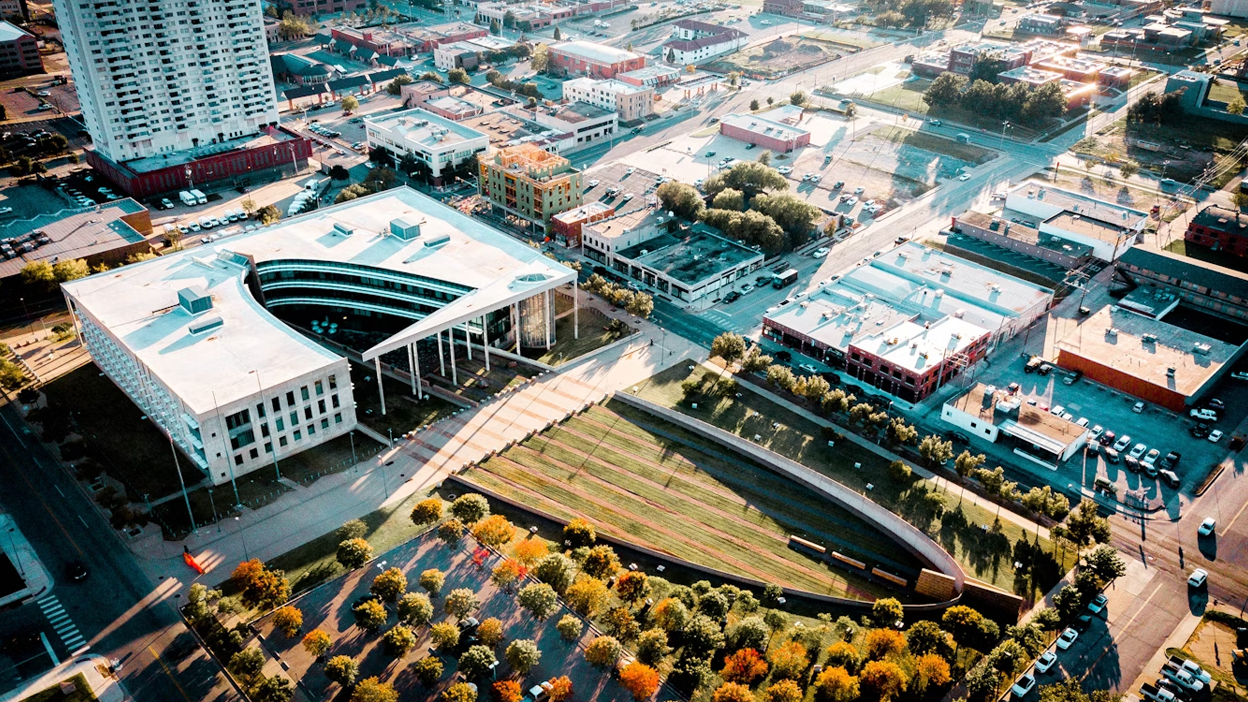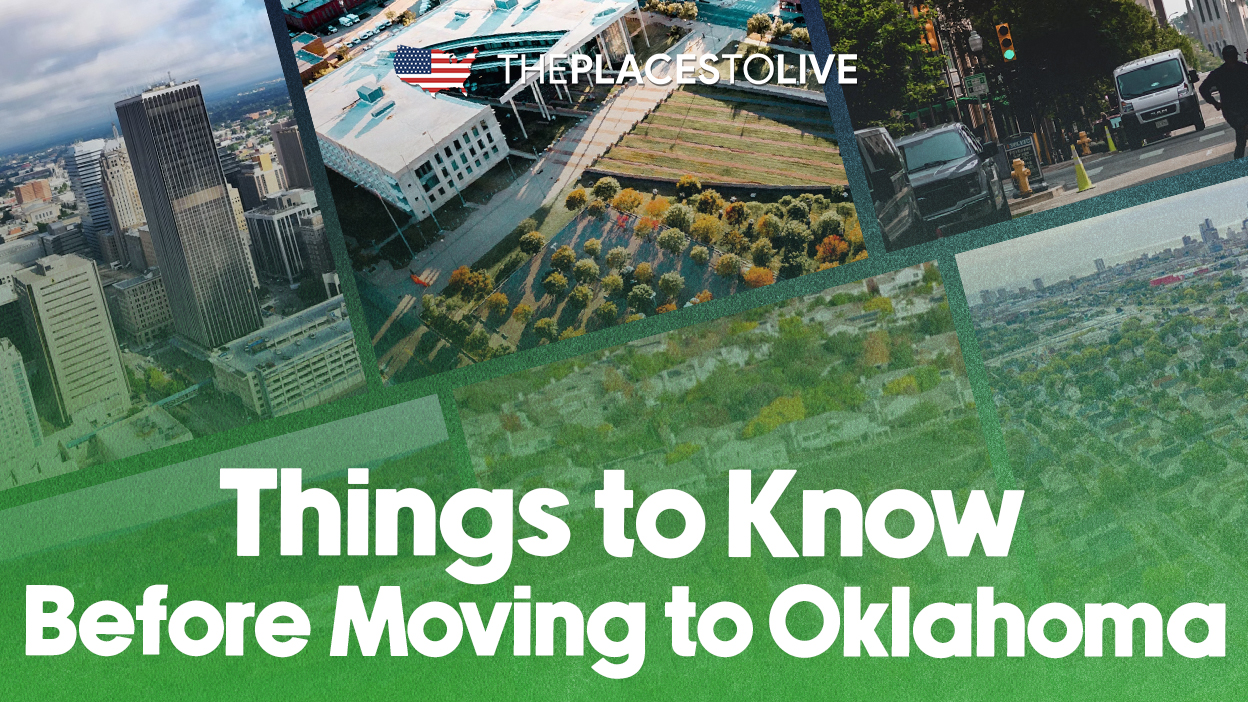Things to Know Before Moving to Oklahoma: Your Comprehensive Relocation Guide
Moving to a new state brings excitement and questions. If Oklahoma is on your radar, it’s important to be informed. This Oklahoma lifestyle guide covers all the essential things to know before moving to Oklahoma, offering key insights for a smooth and confident relocation.
Known for its low cost of living, rich culture, and expanding economic opportunities, Oklahoma draws newcomers seeking balance between urban vibrancy and rural charm. The median home price hovers around $125,000 — significantly below the national median of about $230,000 — making the state an especially affordable option. Its growing job market spans energy, aerospace, healthcare, and tech industries.
Whether you’re relocating for work, family, or lifestyle, this thorough guide equips you with practical tips on climate, housing, community, local laws, and budgeting.
Let’s dive into everything you need to know before making your move to Oklahoma.
Key Things to Know Before Moving to Oklahoma

Climate and Weather in Oklahoma
Oklahoma features a humid subtropical climate with hot summers and cold winters. Summers can see temperatures soaring well into the 90s °F, while winters dip below freezing, sometimes bringing snow.
Situated in the heart of Tornado Alley, Oklahoma experiences heightened tornado activity primarily from spring through early summer. Severe weather such as thunderstorms, hail, and occasional flash floods also occur.
For anyone relocating to Oklahoma, tornado preparedness is essential. This means having a plan, monitoring weather alerts, and having access to shelter during storms. Understanding local weather patterns helps you adapt seamlessly to Oklahoma life, reducing risks during the severe weather season.
Cultural and Community Aspects
One of the best things to know before moving to Oklahoma is its rich cultural tapestry. The state blends significant Native American heritage, Western cowboy traditions, and growing urban sophistication.
Families often find Oklahoma’s communities welcoming and tight-knit, with frequent local festivals, rodeos, and music events that celebrate this unique fusion. University towns like Norman (home to the University of Oklahoma) and Stillwater (Oklahoma State University) provide dynamic social scenes and vibrant cultural activities, appealing to younger residents and academics alike.
Smaller towns typically offer a slower pace, fostering a strong sense of belonging with community involvement at the heart of daily life. Overall, the sociable and family-oriented atmosphere makes Oklahoma an inviting place to settle down.
Job Market and Economic Opportunities
Oklahoma’s economy is diverse, presenting multiple career opportunities across sectors. The oil and natural gas energy industry remains a key employer, alongside strong aerospace manufacturing and agricultural sectors.
Healthcare services and technology startups are booming, especially in metropolitan areas like Oklahoma City and Tulsa — the state’s primary economic hubs. These cities offer low unemployment rates combined with a favorable business climate.
For job seekers and entrepreneurs, Oklahoma presents a good balance of affordability and opportunity, with a growing demand for skilled workers in healthcare, technology, and engineering fields. This economic diversity is a top reason many people consider relocating to Oklahoma.
Local Laws and Regulations
Before moving, it’s crucial to familiarize yourself with Oklahoma’s specific laws. If you bring a vehicle, you must transfer your driver’s license within 30 days of establishing residency and register your vehicle accordingly.
Oklahoma has relatively permissive gun ownership laws but includes regulations you should review, particularly if you own firearms or plan to purchase them.
Pet owners should be aware of rental property rules that vary by community, including possible pet deposits and breed restrictions. These laws affect housing choices and can impact moving plans.
Knowing these legal basics ahead of time smooths your transition and ensures compliance with state regulations.
Moving to Oklahoma Tips

Best Times of Year to Relocate
Timing your move can reduce stress and costs. Spring and fall are the best seasons to relocate to Oklahoma due to milder weather conditions. These months generally avoid the peak of tornado season (late spring to early summer) and the hot summer temperatures that can make moving difficult.
Planning your move during these periods provides better weather for travel and settling into your new home comfortably.
Finding Reliable Moving Companies
Finding trustworthy movers is essential for a hassle-free relocation. We recommend established national companies like Allied Van Lines and UPack Moving Services. Both provide comprehensive services including professional packing, insurance protection, and nationwide coverage, designed to safeguard your belongings throughout the journey to Oklahoma.
Choosing movers with regional experience and solid reputations can prevent common moving pitfalls and ease your transition. Always request estimates and verify credentials before booking.
Setting Up Utilities and Services
Setting up utilities before you arrive will get your Oklahoma home up and running quickly. Major providers include:
- OG&E for electricity
- Oklahoma Natural Gas for heating and cooking
- City or regional water utilities (varies by area)
Many providers offer online account creation and service setup, which helps you avoid service gaps on moving day. Some cities may also provide bundled utility packages that can save you money. Locking in these services in advance ensures comfort from day one.
Housing: Renting vs Buying
With a median home price near $125,000, Oklahoma boasts a homeownership rate around 70%, making buying a viable and cost-effective option for many newcomers. Mortgages are generally affordable, and property taxes are moderate.
Renting appeals to those seeking flexibility or who need time to explore neighborhoods. The rental market constitutes roughly 29% of housing. Before renting, research neighborhood safety, quality of local schools, and pet policies. These factors greatly affect daily life and long-term satisfaction.
Both options are accessible within Oklahoma’s affordable housing market, but thorough due diligence will guide your best choice.
Relocating to Oklahoma – What to Expect
Schools and Education
If you have children, understanding the education landscape is a priority. Oklahoma offers public, private, and charter school options for K–12 students. School quality can vary widely by district, so reviewing local ratings helps you select the right area to live.
University cities, especially Norman and Stillwater, add additional educational and cultural richness, hosting major state universities with extensive community programs and events. This creates a vibrant atmosphere well-suited for families and individuals pursuing educational advancement.
Transportation
Public transit resources exist mainly in Oklahoma City and Tulsa, featuring bus networks that serve urban commuters. Outside these cities, most residents rely on personal vehicles due to limited rural public transportation.
Road infrastructure is generally solid, though inclement weather during tornado and winter seasons may occasionally affect travel safety. Remember to transfer your driver’s license to Oklahoma within 30 days, a legal requirement impacting all new residents.
Healthcare Facilities
Healthcare in Oklahoma is a mix of urban and rural access. Large cities host major hospitals and specialty clinics, while rural areas may have limited healthcare options.
Insurance costs should be reviewed carefully, as healthcare expenses in Oklahoma are higher than the national average. Choosing the right plan before moving can save money and ensure you have appropriate medical coverage where you settle.
Community and Social Integration
Oklahomans tend to be friendly and welcoming, making it easier to integrate through participation in local events, festivals, and volunteer opportunities. Annual celebrations like the Tulsa International Mayfest and Oklahoma State Fair display the state’s cultural vibrancy.
Joining clubs focused on arts, outdoors, or community improvement enhances your social circles and accelerates feeling at home in your new community.
Oklahoma Cost of Living
Understanding the Oklahoma cost of living compared to national averages is vital for budgeting and financial planning. Here’s a breakdown of key expenses:
| Cost Category | Oklahoma Index | U.S. Average Index | Notes |
|---|---|---|---|
| Overall | 83.7 | 100 | About 16% more affordable overall |
| Housing | 54 | 100 | Median home cost ~$125,000 vs $230,000 nationally |
| Utilities | 99.7 | 100 | Roughly on par |
| Grocery | 92.3 | 100 | Slightly below average |
| Transportation | 89.2 | 100 | More affordable |
| Healthcare | 115.8 | 100 | Somewhat higher costs |
Housing costs are notably lower — about half the national average — making Oklahoma an attractive option for affordable homeownership or renting. Utilities and groceries align closely to average U.S. prices, while healthcare expenses run higher.
When planning your budget, remember to account for upfront costs such as deposits, moving fees, and utilities setup. To keep track of your finances efficiently, consider using budgeting tools like YNAB (You Need A Budget) or Mint. These apps provide intuitive platforms to manage expenses throughout your move and beyond, helping you settle securely without surprises.
Oklahoma Lifestyle Guide

Urban vs Rural Living
Oklahoma offers a spectrum of living environments:
- Urban life in Oklahoma City and Tulsa features thriving arts scenes, diverse foodie cultures, extensive nightlife, and employment opportunities. These cities blend modern amenities with historical charm.
- Rural towns focus on outdoor lifestyles surrounded by lakes, parks, and hiking trails. The pace is slower with greater community cohesion and family-centric values.
Choosing between urban excitement and rural serenity depends on your personal preference and lifestyle needs.
Outdoor Activities and Cultural Festivals
Outdoor enthusiasts find plenty in Oklahoma—from hiking and fishing at scenic lakes to boating on reservoirs. Numerous parks and wildlife areas invite year-round exploration.
Cultural life thrives with festivals celebrating Native American traditions, rodeos, and music. These events foster a strong community spirit and cultural pride, enriching everyday life for residents.
Food Scene and Local Specialties
Oklahoma’s culinary offerings reflect its cultural roots: barbecue and chicken-fried steak are staples. Meanwhile, urban neighborhoods showcase a growing array of international and fusion cuisines, making food lovers feel right at home.
Eating out or cooking local ingredients is a delightful part of embracing the Oklahoma lifestyle.
Family-Friendly Amenities and Pet Owner Insights
Oklahoma is family-oriented with parks, playgrounds, and recreational centers well maintained in suburban communities. Schools and youth programs support active childhood development.
Pet owners should verify rental or homeowners association (HOA) pet policies before committing to a property. Breed restrictions and pet deposits frequently vary by neighborhood. Being informed helps ensure a welcoming home for your furry family members.
FAQs:
What is the safest city in Oklahoma?
Cities like Edmond, Jenks, and Bixby consistently rank among the safest in terms of crime rates and community reputation, making them excellent choices for families and individuals.
How do I get a driver’s license in Oklahoma?
New residents must transfer their driver’s license within 30 days at the Oklahoma Department of Public Safety. Required documents include proof of identity, residency, and Social Security number. You’ll need to pass vision and possibly a knowledge test depending on prior credentials.
Which neighborhoods are best for families?
Family-friendly neighborhoods with strong schools and amenities include Edmond, Jenks, Norman, and Bixby. These areas balance safety, education quality, and community activities well.
What are typical pet policies for rentals?
Rental pet policies vary widely. Some properties have breed restrictions, size limits, or require pet deposits. It’s vital to confirm these details upfront with landlords or property managers.
Conclusion
Moving to Oklahoma offers an affordable, opportunity-rich lifestyle filled with cultural diversity and varied living environments. From low housing costs and a strong, diversified economy to welcoming communities and engaging cultural events, Oklahoma provides balance for families, professionals, and retirees alike.
Key things to know before moving to Oklahoma include preparing for the climate’s tornado risks, understanding local laws, assessing housing options carefully, and planning financially with the help of recommended moving partners like Allied Van Lines or UPack Moving Services, plus budgeting apps like YNAB and Mint.
With thorough preparation and the practical tips shared here, your relocation to Oklahoma can be smooth and rewarding. Embrace all that the Sooner State has to offer with confidence and a well-informed approach.
Welcome to your new Oklahoma adventure!





